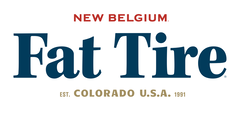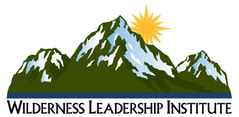Snowpack Summary March 24, 2023
Posted by Allen Giernet @ 6:05 am (this summary expires in 24 hours)
This summary applies to backcountry areas only.
The Bottom Line –
Wind Slab avalanches will be possible to human trigger today mainly near and above tree line on Northwest to North to Northeast aspects near ridges and on sides of gullies. The possibility exists for this problem on all aspects. We have received several reports over the past couple of days of both natural and human triggered winds slabs. Look for signs of transported snow, cornices, wind scouring, wind textured snow and pillowed hollow sounding snow to indicate areas of wind loading. Avoid slopes over 30° if you find these indications. Active wind loading will still be likely with moderate to strong West to Southwest winds forecast today and plenty of transportable snow available. Wet slabs may be possible in the San Gabrial mountains on southerly aspects such as the Baldy Bowl today as we expect warmer afternoon temperatures with sunnier skies.
Please share your observations with us at the avalanche center Submit Reports page.
Posted by Allen Giernet @ 6:05 am (this summary expires in 24 hours)
This summary applies to backcountry areas only.
The Bottom Line –
Wind Slab avalanches will be possible to human trigger today mainly near and above tree line on Northwest to North to Northeast aspects near ridges and on sides of gullies. The possibility exists for this problem on all aspects. We have received several reports over the past couple of days of both natural and human triggered winds slabs. Look for signs of transported snow, cornices, wind scouring, wind textured snow and pillowed hollow sounding snow to indicate areas of wind loading. Avoid slopes over 30° if you find these indications. Active wind loading will still be likely with moderate to strong West to Southwest winds forecast today and plenty of transportable snow available. Wet slabs may be possible in the San Gabrial mountains on southerly aspects such as the Baldy Bowl today as we expect warmer afternoon temperatures with sunnier skies.
Please share your observations with us at the avalanche center Submit Reports page.

Wind Slab avalanches are the release of a cohesive layer of snow (a slab) formed by the wind. Wind typically transports snow from the upwind sides of terrain features and deposits snow on the downwind side. Wind slabs are often smooth and rounded and sometimes sound hollow, and can range from soft to hard. Wind slabs that form over a persistent weak layer (surface hoar, depth hoar, or near-surface facets) may be termed Persistent Slabs or may develop into Persistent Slabs.
General Summary
#1 Wind Slab – A number of Wind Slab Avalanches have been reported over the past two days. Both natural and human triggered indicating both, touchy to somewhat stubborn and large in size. Mainly on Northern aspects near to above 8,000’ but possible on other aspects due to topographical influence. Wind Slabs will be found below ridges and on sides of gullies. Expect some bonding as we get warmer temperatures but with significant snow available for transport and moderate to strong winds forecast through the day active loading will still be likely. Reports have indicated a firm icy layer prior to this recent storm that has resulted in poor bonding with significant wind loading through the storm. Look for the signs of wind slab development as you travel. Watch for active wind transport, cornices, scoured areas on windward slopes, wind texture and be aware of pillowed hollow sounding snow as indications of wind slabs or where wind slabs have developed. Stick to lower angle terrain below 30° if you encounter any wind slabs or move to a slope where this problem does not exist.
Weekend Outlook: Clearer skies and some warming will bring slow settling of the snowpack to the recent storm accumulation. Wind slabs may continue to build with moderate winds although overall bonding will happen through the next few days and lower the possibility of triggering. Lower elevations southerly aspects will have the potential for wet loose avalanches mainly in the San Gabriel mountains with warm afternoon temps and solar input through the weekend. Another cold storm is forecast for next week.
Exercise caution if venturing out into the mountains and use avalanche protocols, travel with a partner and bring your beacon, shovel and probe.
Please share any information when you are out in the mountains. Even a photo is helpful. Submit observations to Submit Reports page.
#1 Wind Slab – A number of Wind Slab Avalanches have been reported over the past two days. Both natural and human triggered indicating both, touchy to somewhat stubborn and large in size. Mainly on Northern aspects near to above 8,000’ but possible on other aspects due to topographical influence. Wind Slabs will be found below ridges and on sides of gullies. Expect some bonding as we get warmer temperatures but with significant snow available for transport and moderate to strong winds forecast through the day active loading will still be likely. Reports have indicated a firm icy layer prior to this recent storm that has resulted in poor bonding with significant wind loading through the storm. Look for the signs of wind slab development as you travel. Watch for active wind transport, cornices, scoured areas on windward slopes, wind texture and be aware of pillowed hollow sounding snow as indications of wind slabs or where wind slabs have developed. Stick to lower angle terrain below 30° if you encounter any wind slabs or move to a slope where this problem does not exist.
Weekend Outlook: Clearer skies and some warming will bring slow settling of the snowpack to the recent storm accumulation. Wind slabs may continue to build with moderate winds although overall bonding will happen through the next few days and lower the possibility of triggering. Lower elevations southerly aspects will have the potential for wet loose avalanches mainly in the San Gabriel mountains with warm afternoon temps and solar input through the weekend. Another cold storm is forecast for next week.
Exercise caution if venturing out into the mountains and use avalanche protocols, travel with a partner and bring your beacon, shovel and probe.
Please share any information when you are out in the mountains. Even a photo is helpful. Submit observations to Submit Reports page.
General Mountain Weather Forecast |
Weather Page Link
Click on the links below for the latest information
Click here for this Season's Snow Pack Summaries
To better understand the challenges and potential variability over the large area we are producing information for please read our Snowpack Summary - Format and Limitations
Disclaimer:
This Bulletin is designed to generally describe conditions where local variations always occur. Travelers are advised to exercise caution and make slope specific evaluations. As always, please treat this bulletin with appropriately guarded skepticism and make your own assessments. Help to provide more information to the community by reporting your observations
This Bulletin is designed to generally describe conditions where local variations always occur. Travelers are advised to exercise caution and make slope specific evaluations. As always, please treat this bulletin with appropriately guarded skepticism and make your own assessments. Help to provide more information to the community by reporting your observations
Latest Observtions
Click on the observation to go to the full report
|
Observation type
Avalanche Location - My Charlton SB Mtns. Date (yyyymmdd) - 20230313 Comment - Please see attached PDF writeup for the figures. (go to the actual report and download the PDF for a detailed summary) It appears there were several simultaneous natural slides off of the east facing couloirs of Mt Charlton in the San Gorgonio area, See Figure 1. On the day of the observation, the temperature was warm (47 F at 9000 ft) and the overnight temperatures were above the freeze thaw cycle where the estimated freezing level was 10,500 ft (which is close to the estimated fracture point of 10,400 ft). There were light winds and clear skies in the morning with cloud cover in the afternoon. The snow fall for the areas (All of Southern California and Northern California) is being recorded as historic where over 200 inches was recorded for the season at the Big Bear local ski resort (just North of San Gorgonio area) at the time of the observation. Of those 200 inches, over 127 inches of snow fell between 2/21 to 3/3 (spanning 11 days), see Figure 2. The temperatures were unusually cold for the SoCal area where snow levels were below 4,000 ft (reaching as low as 1500 ft). The water loading was about 4 inches for the 127 inches of snow, see Figure 2. Then on 3/11 – 3/12 another 1 inch of water fell in the area (see Figure 2) with a freezing level of 11,000 ft which may have caused the light snow to form a slush or wet slab avalanche, see Figure 3. My estimates show that the fracture occurred and propagated the entire span of the east facing couloirs of Mt Carleton, see Figure 4. This avalanche had a path of about 1.42 miles with a width of 500 ft or more, see Figure 5 through Figure 8. It is estimated, based on previous hikes in the area, that the snow depth in the avalanche path is over 100 ft. Several very large trees were taken out from the avalanche and are included in the debris field, see Figure 9. This appears to be a natural slide that was triggered from weather and no one was caught in this slide. Due to the size, path length, and the descriptive nature of the avalanche, I would estimate this as a very large avalanche in the R4D4 rating which easily would have buried and killed someone if they were in its path. The conditions in the other areas in the San Gorgonio wilderness had a very icy surface that didn’t break during skinning at the 10,000 ft elevation, see Figure 10 |
Observation type -
Snowpack Location - Mt. Alta Diablo Date (yyyymmdd) - 20230318 Comment - Toured up to 9800ft on the north side of Alto Diablo. Firm conditions to start, but warmed up quickly. 9800-9000ft was a 1-2" crust of consolidated graupel, over 8-12 inches of very light snow. Very hard layer below this. 9000-8400: wind scoured bulletproof snow, especially on the more east facing aspect of our line. below 8400: perfect corn by 2pm |
Observation type
Avalanche Location - Mt. Baden Powell Date (yyyymmdd) - Comment - This avalanche was observed from Mtn High on the northeastern face of Baden Powell. There’s much less snow since last weekend before the big rain event. |
Observation type
Avalanche Location - Grinnel Mountain SB Date (yyyymmdd) -20230318 Comment We observed a skier trigger R1-D1 loose avalanche at about 9500' on N aspect below tree-line, and an older natural R1-D2 avalanche on the N aspect at about 9250'. We were descending from Grinnell Mountain in the San Gorgonio area. The skier triggered R1-D1 may have been powerful enough to knock skier off their feet, but not big or powerful enough to bury anyone. It was caused when skiing through unconsolidated heavy snow on shaded/colder N aspect on a slope approx. 36 degrees. Loose debris ran for approx. 100 feet before coming to a stop. Skiers were well out of harms way in a safe zone. Further down the descent, at approx. 9250' on N aspect we observed a natural avalanche that had occurred a few days prior. We did not see an obvious crown. Perhaps a loose point release stepped down into a crust? The debris visible do seem bonded in small blocks, indicating more structure in the snow than just a loose point release. |
General Caution
You should always use safe terrain management and carry avalanche rescue equipment in the backcountry. Most avalanches are triggered by someone in the party or the victim. Practice with your rescue gear often and be prepared should the worst happen. Though we do not have an avalanche forecast center in this area as of yet, the information posted and shared here as well as the resources available on this site will help to make informed decisions for your backcountry travels. Use avalanche forecasts in your travels wherever available and be aware that avalanche ratings are general information. Elevation, location, geographic variability’s, slope aspect and angle all have effects on the particular area you travel in. This is only one piece of the information you should use in your decision making process. There is no substitute for avalanche education, for more resources and information as well as education please refer to our resources page.
You should always use safe terrain management and carry avalanche rescue equipment in the backcountry. Most avalanches are triggered by someone in the party or the victim. Practice with your rescue gear often and be prepared should the worst happen. Though we do not have an avalanche forecast center in this area as of yet, the information posted and shared here as well as the resources available on this site will help to make informed decisions for your backcountry travels. Use avalanche forecasts in your travels wherever available and be aware that avalanche ratings are general information. Elevation, location, geographic variability’s, slope aspect and angle all have effects on the particular area you travel in. This is only one piece of the information you should use in your decision making process. There is no substitute for avalanche education, for more resources and information as well as education please refer to our resources page.






















